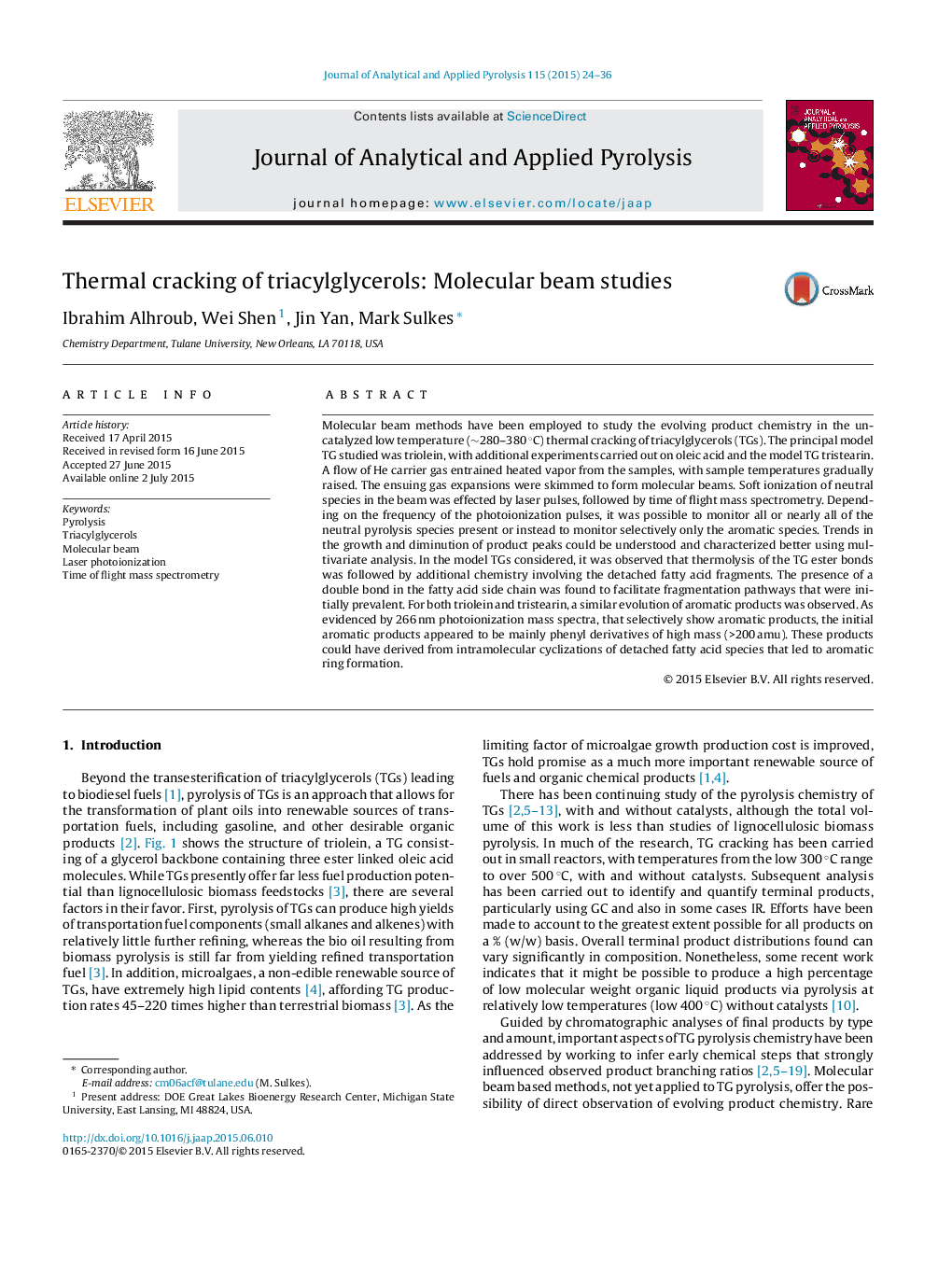| Article ID | Journal | Published Year | Pages | File Type |
|---|---|---|---|---|
| 1197074 | Journal of Analytical and Applied Pyrolysis | 2015 | 13 Pages |
•Molecular beam methods facilitate real time mass spectrometric studies of triacylglycerol pyrolysis.•Different laser photoionization approaches allow for either general product detection or aromatic specific detection.•Thermally induced CC bond breaking at allylic fatty acid positions is favored. As a result, initial cleavage patterns that are facilitated for oleic acid moieties (contains double bond) are not facilitated for a fatty acid without double bonds.•Aromatic products initially appear predominantly at high (>200 amu) mass.
Molecular beam methods have been employed to study the evolving product chemistry in the un-catalyzed low temperature (∼280–380 °C) thermal cracking of triacylglycerols (TGs). The principal model TG studied was triolein, with additional experiments carried out on oleic acid and the model TG tristearin. A flow of He carrier gas entrained heated vapor from the samples, with sample temperatures gradually raised. The ensuing gas expansions were skimmed to form molecular beams. Soft ionization of neutral species in the beam was effected by laser pulses, followed by time of flight mass spectrometry. Depending on the frequency of the photoionization pulses, it was possible to monitor all or nearly all of the neutral pyrolysis species present or instead to monitor selectively only the aromatic species. Trends in the growth and diminution of product peaks could be understood and characterized better using multivariate analysis. In the model TGs considered, it was observed that thermolysis of the TG ester bonds was followed by additional chemistry involving the detached fatty acid fragments. The presence of a double bond in the fatty acid side chain was found to facilitate fragmentation pathways that were initially prevalent. For both triolein and tristearin, a similar evolution of aromatic products was observed. As evidenced by 266 nm photoionization mass spectra, that selectively show aromatic products, the initial aromatic products appeared to be mainly phenyl derivatives of high mass (>200 amu). These products could have derived from intramolecular cyclizations of detached fatty acid species that led to aromatic ring formation.
